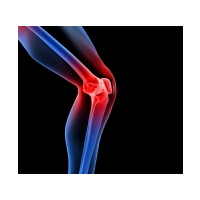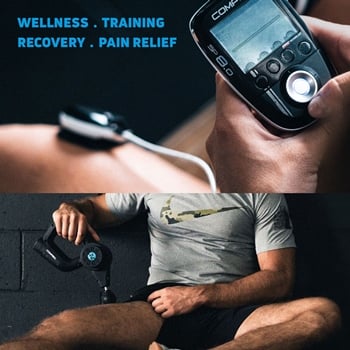-
Free Delivery - For orders over £60 & selected items
our blog post
Off loading braces for knee arthritis
Off loading braces for knee arthritis
There are few things that help arthritis of the knee more than off loading.
Off loading is exactly as it sounds, moving weight (loading) from one place to another. In the context of knees, this is this is done by placing pressure on either the inside (medial) or outside (lateral) part of the knee, to alleviate pain on the opposite side.
Where someone has single sided (uni-compartmental) knee osteo arthritis, the damage to the joint is either on the inside (medial) or outside (lateral) portion of the knee joint.
Because of the way the knee is structured, there is an ability for the joint to move by a few degrees, that increases the valgus or varus angles. To understand this better, have a look at the picture below.

If there is arthritis causing pain on the lateral (outer) aspect of the knee, pressure can be placed on the medial (inner) side of the knee to relieve it.
Off loading braces, such as the Donjoy OA Adjuster or the Donjoy Defiance utilise this function for non-surgical management of knee pain.
The Benefits of Offloading Knee Braces
Knee pain, often caused by conditions like osteoarthritis, ligament injuries, or chronic overuse, is a common issue that affects individuals of all ages. For many, offloading knee braces offer significant relief by redistributing pressure from the affected part of the knee to healthier areas. Offloading knee braces are specially designed to reduce the stress on the damaged part of the knee joint, providing both comfort and functional support. These braces are most commonly used for people suffering from unicompartmental osteoarthritis (OA), where one part of the knee joint is more severely affected than the others. Here are the key benefits of offloading knee braces:
1. Pain Reduction
One of the primary benefits of offloading knee braces is pain relief. Offloading braces work by redistributing the weight that is usually placed on the affected part of the knee. This means less pressure on the damaged cartilage, which is a common cause of pain in conditions like osteoarthritis. By shifting weight away from the most affected area, offloading knee braces can significantly reduce discomfort and pain, especially during activities like walking, climbing stairs, or exercising.
2. Improved Mobility and Function
Offloading knee braces help to stabilize the knee joint, which can improve overall mobility and function. By redistributing pressure, these braces encourage a more natural gait, allowing for smoother movement. This can be especially helpful for those who have difficulty walking or performing daily activities due to knee pain. The increased stability reduces the risk of buckling or giving way, a common issue for those with knee arthritis, thus enabling individuals to move with greater confidence and efficiency.
3. Reduction in Load on the Affected Compartment
For individuals with unicompartmental knee osteoarthritis, where one side of the knee joint is more affected than the other, offloading braces help to relieve the load on the damaged compartment. These braces use mechanical forces to shift the weight towards the healthier side of the joint, effectively unloading the worn cartilage and reducing inflammation. This can prevent further degeneration of the affected area and slow the progression of osteoarthritis, reducing the need for more invasive treatments like surgery or joint replacement.
4. Support for Conservative Management
Offloading knee braces are a valuable tool for those seeking non-surgical methods of managing knee pain. Many patients with knee osteoarthritis or other knee conditions opt for offloading braces as part of a conservative treatment plan. These braces can be combined with other approaches such as physical therapy, anti-inflammatory medications, or weight management to manage symptoms. By providing additional support and relieving pain, offloading braces can make physical therapy exercises more effective, helping to strengthen the muscles around the knee, which further reduces stress on the joint.
5. Enhanced Post-Surgery Recovery
Offloading knee braces are also commonly used during post-surgical recovery. After knee surgery, especially procedures like partial knee replacement or ligament repair, these braces can provide additional support during the healing process. They help to protect the joint, improve alignment, and prevent undue stress on the surgical site. This is crucial for patients who need to gradually return to full mobility and strength after surgery, as it helps to prevent complications like joint misalignment or re-injury.
6. Increased Quality of Life
For individuals living with chronic knee pain, offloading knee braces can significantly improve their quality of life. By alleviating pain, improving mobility, and increasing stability, these braces allow individuals to engage in everyday activities without the constant discomfort of knee issues. Whether it’s walking, playing sports, or participating in hobbies, offloading knee braces can help individuals regain independence and confidence, ultimately leading to a better overall quality of life.
7. Prevention of Further Joint Degeneration
Over time, excessive pressure on a damaged knee joint can lead to further degeneration, increased pain, and even the need for joint replacement surgery. Offloading knee braces can slow this process by shifting the weight away from the damaged areas, allowing the joint to heal and preventing further wear and tear. This protective effect is especially important for individuals who are not yet candidates for surgery but want to preserve their knee function and avoid future complications.
8. Customisable Fit and Comfort
Most offloading knee braces are designed to be highly adjustable, ensuring a personalized fit. This customization allows for optimal support and comfort, making it easier to wear the brace throughout the day without discomfort. With various sizes, adjustable straps, and materials that promote breathability, modern offloading knee braces are made to suit different lifestyles and activity levels, ensuring that individuals can use them in a variety of settings—from casual walking to more intense physical activities.
Conclusion
Offloading knee braces offer numerous benefits for individuals with knee pain, particularly those dealing with conditions like osteoarthritis. By redistributing pressure, these braces help to reduce pain, improve mobility, and protect the knee joint from further damage. Whether used as part of a conservative treatment plan, in post-surgical recovery, or as a means of preventing further degeneration, offloading knee braces play a crucial role in enhancing knee function and quality of life. For those seeking relief from knee pain without resorting to surgery, an offloading knee brace can provide an effective and non-invasive solution.
If you need any help when deciding which knee brace is best for you, call us on 020 8364 3550 so we can help.






